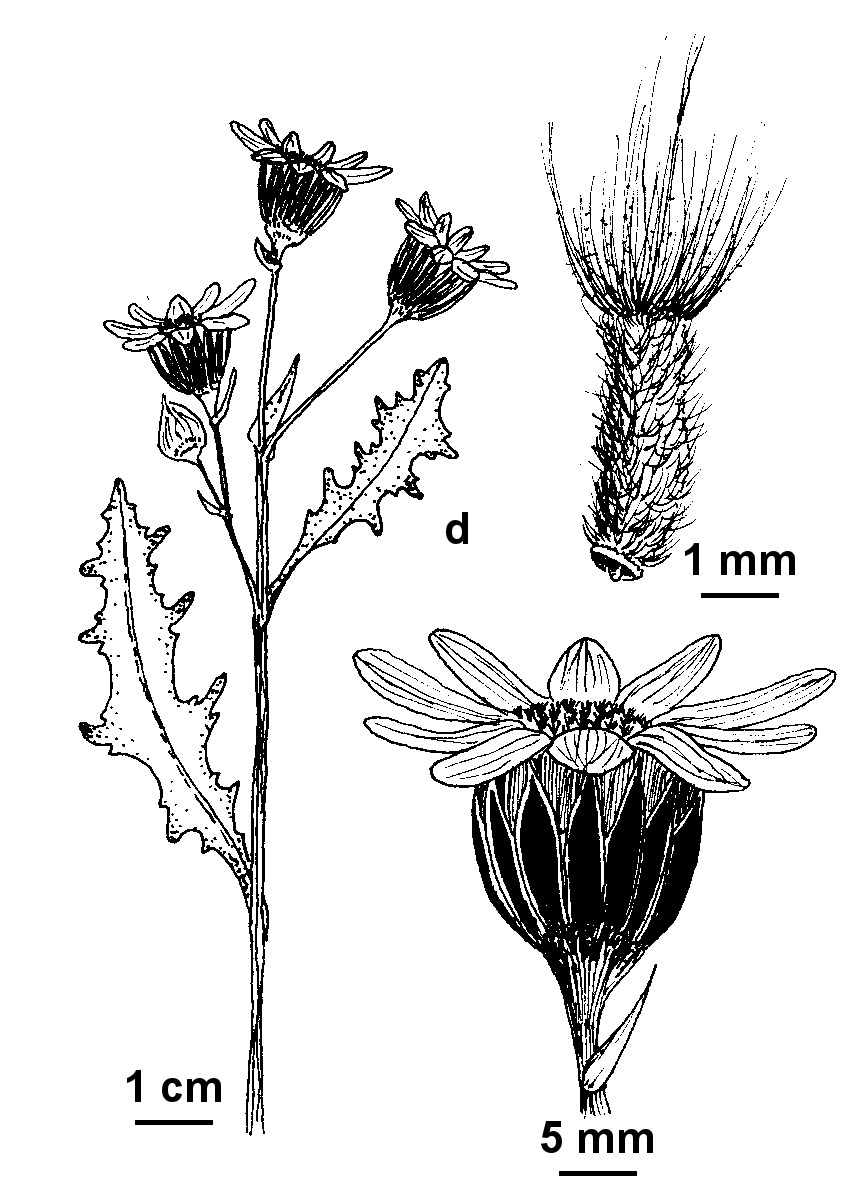Senecio platylepis
DC.Erect, simple or few-branched, weakly pubescent, somewhat fleshy annual to c. 30 cm high. Leaves sessile, lanceolate to oblanceolate in outline, 2–10 cm long, 6–20 mm wide, pinnatifid to bipinnatisect, at least the cauline leaves stem-clasping and often strongly dilated at base. Inflorescence of 1–5(–12) capitula; peduncles hollow and somewhat expanded just below capitula; capitula radiate; involucre cup-shaped or campanulate, 7–10 mm long; bracts 11–20; bracteoles absent or up to c. 5. Ray florets 7–16, bright yellow, ligules 9–13 mm long; disc florets c. 30–60, yellow. Cypselas cylindric, 4.5–5.5 mm long, densely white-pubescent; pappus of white barbellate hairs 6–8 mm long, persistent. Flowers Aug.–Oct.
LoM, MuM, MSB, MuF. Also Qld, NSW. In Victoria confined to the far north-west (e.g. Lake Wallawalla, Pink Lakes state Park), where localized on loamier soils. Usually appearing only following good winter rains.
Walsh, N.G. (1999). Senecio. In: Walsh, N.G.; Entwisle, T.J., Flora of Victoria Vol. 4, Cornaceae to Asteraceae, pp. 941–965. Inkata Press, Melbourne.
 Spinning
Spinning

